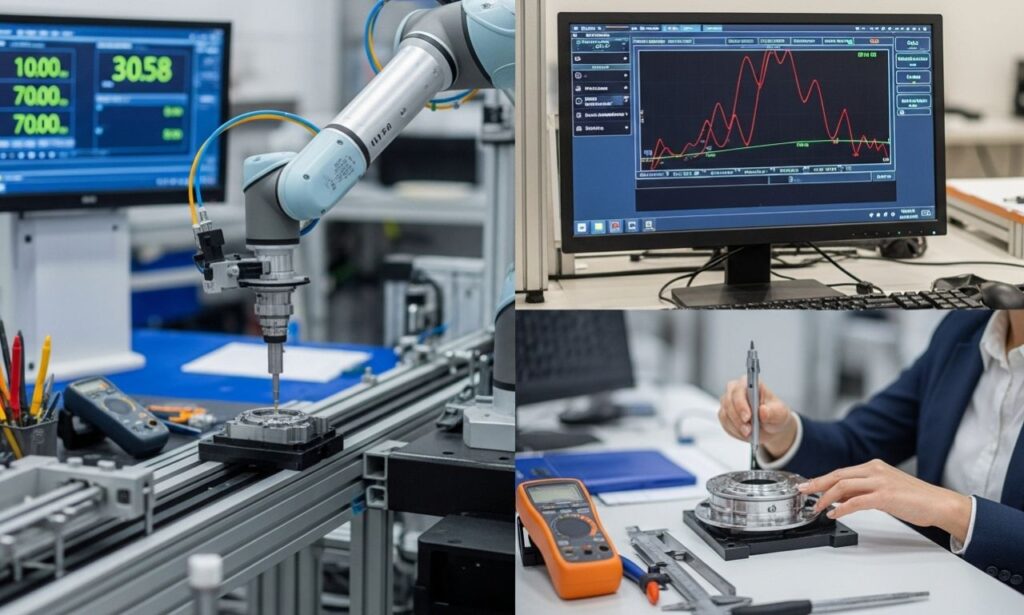Kalibraatio might sound like a complex term reserved for scientists and engineers, but its impact stretches far beyond the lab. This process of adjusting and fine-tuning instruments ensures that measurements are accurate and reliable. In a world where precision is paramount, kalibraatio plays an essential role in various fields, from healthcare to manufacturing. Whether it’s ensuring that medical devices deliver the right dosage or making sure machinery operates efficiently on a factory floor, proper kalibraatio can make all the difference. Join us as we explore how this critical practice enhances outcomes across different sectors, leading to better results for everyone involved.
What is Kalibraatio and Its Importance
Kalibraatio is the process of adjusting and validating measurement instruments to ensure their accuracy. This practice is crucial across various sectors where precision matters.
By aligning devices with established standards, kalibraatio minimizes errors. Accurate measurements help prevent costly mistakes in operations and research.
In scientific experiments, even minor inaccuracies can lead to significant deviations in results. Kalibraatio safeguards against such discrepancies, promoting reliable outcomes.
In healthcare settings, proper calibration of medical equipment ensures that patients receive accurate diagnoses and treatments. The stakes are high when lives depend on precise data.
Manufacturers also rely on kalibraatio to maintain efficiency in production lines. Consistent quality leads to enhanced customer satisfaction and lower waste levels.
Without proper calibration practices, industries would face increased risks. Inaccurate measurements could have far-reaching consequences that touch every aspect of life.
The Impact of Kalibraatio in Science and Research
Kalibraatio plays a pivotal role in the realm of science and research. It ensures that instruments deliver accurate measurements, which are crucial for reliable results. When equipment is correctly calibrated, researchers can trust their findings.
In fields like physics and chemistry, even small discrepancies can lead to significant errors. Proper kalibraatio minimizes these risks, allowing scientists to draw valid conclusions from their experiments.
Moreover, consistent calibration supports replication studies. This is vital in building a solid foundation for scientific knowledge. If one lab’s results differ drastically from another’s due to poor calibration, it undermines credibility.
Additionally, kalibraatio fosters innovation by providing precise data needed for advancements. Researchers can confidently push boundaries when they know their tools measure accurately. Thus, the impact of proper kalibraatio extends far beyond mere accuracy; it propels entire fields forward through enhanced reliability and trustworthiness in research outcomes.
Kalibraatio in Healthcare: Improving Accuracy and Patient Outcomes
Kalibraatio plays a pivotal role in healthcare, ensuring that diagnostic tools and treatment devices operate with precision. Accurate measurements directly impact patient safety and treatment efficacy.
For instance, blood glucose meters must be properly calibrated to deliver correct readings. A small deviation can lead to misdiagnosis or inappropriate insulin administration. This highlights the necessity of regular kalibraatio checks.
Moreover, imaging technologies like MRI and CT scans rely on calibration for clear and accurate images. Flawed results could compromise diagnosis and subsequent care plans.
Healthcare providers also benefit from standardized practices facilitated by kalibraatio. These standards enhance reliability across different facilities, allowing for better collaboration among medical teams.
By investing in proper kalibraatio processes, healthcare systems can significantly improve outcomes while boosting patient trust in medical services.
The Role of Kalibraatio in Manufacturing and Industrial Processes
Kalibraatio plays a critical role in manufacturing and industrial processes. It ensures that machinery and tools operate at their optimal levels, which can significantly affect productivity.
Precision is key in production lines. Even the slightest deviation can lead to defects or inefficiencies. Regular kalibraatio helps maintain accuracy, minimizing waste and reducing costs.
Moreover, consistent calibration fosters a safer work environment. Equipment that functions correctly reduces risks associated with malfunctions or errors.
The integration of advanced technology into practices has transformed how industries approach quality control. Automated systems now allow for real-time monitoring, making it easier to detect discrepancies early on.
As industries evolve towards greater automation and complexity, proper will become increasingly vital for maintaining competitive advantage while ensuring product excellence.
How Kalibraatio Helps Maintain Quality Standards
Kalibraatio plays a crucial role in maintaining quality standards across various industries. By ensuring that instruments and equipment are calibrated accurately, organizations can produce reliable results consistently.
In manufacturing, precise measurements lead to better product quality. This precision reduces defects and enhances customer satisfaction. A well-calibrated system minimizes errors, allowing for smoother operations.
Quality assurance teams benefit immensely from kalibraatio as it helps them verify compliance with industry regulations. Regular calibration checks ensure that processes stay within acceptable limits.
Moreover, implementing proper kalibraatio protocols fosters a culture of accountability among employees. When everyone understands the importance of accurate measurements, they are more likely to take pride in their work.
Consistency achieved through effective is key to fostering trust between businesses and customers. It reinforces the idea that products meet or exceed expectations every time they reach consumers’ hands.
Challenges and Solutions for Effective Kalibraatio Implementation
Implementing kalibraatio presents several challenges that can hinder effectiveness. One common issue is the lack of standardized procedures across different industries. This inconsistency can lead to confusion and misinterpretation of results.
Additionally, training personnel in proper kalibraatio techniques is crucial yet often overlooked. Without adequate training, even the best equipment may yield inaccurate measurements.
Budget constraints also play a significant role. Organizations may hesitate to invest in high-quality calibration tools or services due to cost considerations.
However, these challenges have solutions. Establishing clear protocols for can create uniformity and clarity within teams. Investing in regular training sessions ensures staff are well-equipped with the knowledge they need.
Furthermore, leveraging technology such as automated calibration systems can enhance precision while reducing long-term costs associated with errors or rework. Embracing innovation allows organizations to stay competitive and maintain high standards of accuracy.
Conclusion: Embracing Proper Kalibraatio for Better Results
Proper kalibraatio is essential across various fields. It ensures that measurements and processes are accurate, leading to more reliable results. In science and research, it enhances the validity of experiments, while in healthcare, it directly impacts patient safety and treatment effectiveness.
The manufacturing sector benefits significantly from precise as well. Accurate calibrations help maintain consistency in production quality, reducing waste and increasing efficiency. This precision also extends to maintaining industry standards that protect consumers.
Despite its importance, implementing effective kalibraatio can pose challenges such as resource allocation or training requirements. However, addressing these hurdles with proper strategies can lead to significant improvements in performance.
Embracing proper fosters better outcomes across all sectors involved. The commitment to accuracy not only advances individual organizations but also contributes positively to society at large through enhanced quality control and improved health outcomes. As we move forward into an increasingly data-driven world, prioritizing this practice will undoubtedly yield substantial rewards for everyone involved.






